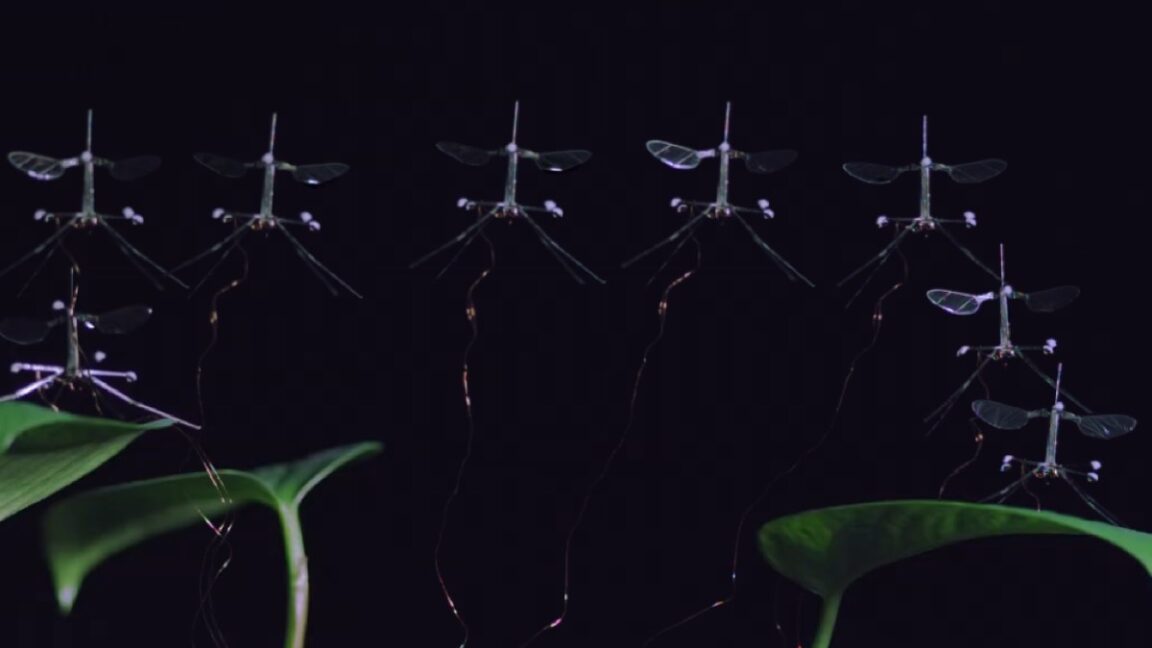The RoboBee is only slightly larger than a penny.
Credit:
Harvard Microrobotics Laboratory
The first step was to perform experiments to determine the effects of oscillation on the newly designed robotic legs and leg joints. This involved manually disturbing the leg and then releasing it, capturing the resulting oscillations on high-speed video. This showed that the leg and joint essentially acted as an “underdamped spring-mass-damper model,” with a bit of “viscoelastic creep” for good measure. Next, the team performed a series of free-fall experiments with small fiberglass crash-test dummy vehicles with mass and inertia similar to RoboBee’s, capturing each free fall on high-speed video. This was followed by tests of different takeoff and landing approaches.
The final step was running experiments on consecutive takeoff and landing sequences using RoboBee, with the little robot taking off from one leaf, hovering, then moving laterally before hovering briefly and landing on another leaf nearby. The basic setup was the same as prior experiments, with the exception of placing a plant branch in the motion-capture arena. RoboBee was able to safely land on the second leaf (or similar uneven surfaces) over repeated trials with varying parameters.
Going forward, Wood’s team will seek to further improve the mechanical damping upon landing, drawing lessons from stingless bees and mosquitoes, as well as scaling up to larger vehicles. This would require an investigation into more complex leg geometries, per the authors. And RoboBee still needs to be tethered to off-board control systems. The team hopes one day to incorporate onboard electronics with built-in sensors.
“The longer-term goal is full autonomy, but in the interim we have been working through challenges for electrical and mechanical components using tethered devices,” said Wood. “The safety tethers were, unsurprisingly, getting in the way of our experiments, and so safe landing is one critical step to remove those tethers.” This would make RoboBee more viable for a range of practical applications, including environmental monitoring, disaster surveillance, or swarms of RoboBees engaged in artificial pollination.
Science Robotics, 2025. DOI: 10.1126/scirobotics.adq3059 (About DOIs).

